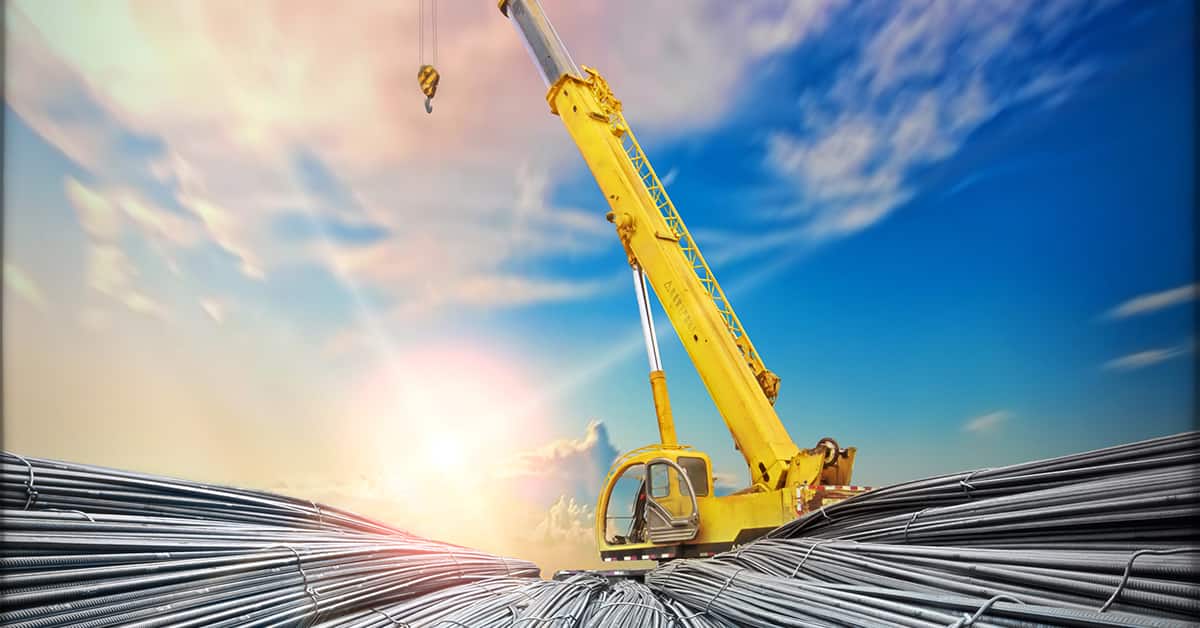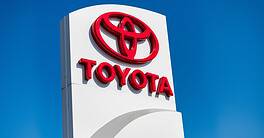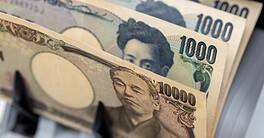Corporate spending plans are booming, with new investment in supply chains, sustainability and digitalization.

Despite concerns that economic growth may slow as central banks tap the brakes to combat inflation, companies around the globe are in a spending boom for capital such as factories and for things like digitalization and automation, 5G networks and the transition to clean energy.
While the US was clearly the leader in capital expenditures (capex) through the end of 2021, Asian economies (excluding Japan)—which account for 46% of global capex, according to S&P Global—have recently ramped up their investment plans as well.
The shortage of computer chips, which has hampered production of everything from autos to video game consoles, makes semiconductors the poster child for capex. Companies are racing to build new fabrication plants (fabs) globally to meet demand. The heaviest hitter is Taiwan Semiconductor Manufacturing, which says it plans to spend a staggering $40 billion to $44 billion in 2022 on new production facilities. Not to be outdone, US chipmaker Intel says it will spend $20 billion on two fabs in Arizona and Samsung is spending an addition $18 billion on chip factories.
Even China’s Semiconductor Manufacturing International, which is under trade restrictions in the US, increased its capex spending plans to $5 billion this year.
The current boom began in the second half of 2021 in the US, whose economy was the first to emerge from the doldrums of the Covid-19 pandemic as consumers shopped relentlessly online and bought new goods, from home gyms to computers to streaming services. The US has recorded the strongest capex spending since the 1940s, according to Morgan Stanley, driven by investment in business equipment and intellectual property rights.
Trends Accelerate
Widespread lockdowns accelerated a trend already underway before the pandemic: companies moving online and investing heavily in cloud computing and automation. To counter some of the impact of the Great Resignation—a record 4.5 million American workers quit their jobs in November alone—firms ramped up spending on artificial intelligence to replace human employees.
Bank of America Head of US equity and quantitative strategy, Savita Subramanian, analyzing earnings reports of 200 S&P 500 index companies late last year, found capex had increased 23% compared with the prior year. Perhaps more importantly, on a two-year basis, capex was up 15%. She suggests capex may be entering a growth cycle.
Even after stores reopened, consumers have continued to shop at home, encouraging companies to continue investing heavily in e-commerce. The 2,000-pound gorilla in online commerce, of course, is Amazon, which not only sells and ships products but provides cloud services to other retailers through its AWS unit. Amazon spent a hefty $73.7 billion on capex in 2021, roughly broken down to 40% in infrastructure, 30% in warehouses, 25% in transportation, with the rest related to offices and the like, Amazon CFO Brian Olsavsky explained on the fourth-quarter earnings call.
Going forward, capital spending on fulfillment will fall back somewhat to “match growth of our underlying businesses,” he said. Elsewhere, however, the spending will continue. “We see the capex for infrastructure going up” this year as the company supports AWS, he noted. For transportation, “we still see additional levels of investment in that in 2022.”
Similarly, Alphabet, the parent company of Google, spent $24.6 billion in 2021 on purchases of property and equipment, which it expects to increase in 2022. On the company’s 2021 fourth-quarter earnings call, after reporting a 47% increase in Google cloud revenue, CFO Ruth Porat said, “We plan to continue to invest aggressively in cloud given the sizable market opportunity we see.” She added that the company plans increases in property acquisitions, including $1 billion for its London headquarters and $2.1 billion for an office building in New York.
As Amazon’s Olsavsky indicated, many US companies are expecting the pace to moderate. “The post-pandemic boom driven by the reopening and booming consumer demand is behind us, but we still have a pretty positive outlook for business investment this year,” says Lydia Boussour, lead US economist at consultancy Oxford Economics. “There is a strong pipeline of industrial orders and we know manufacturers are still struggling to meet that robust demand.”
Boussour notes that automation has been moving from traditional industries like automotive, which has used robots for decades, to things like health care, which has invested heavily in technology during the pandemic.
Strong US consumer demand is driving export growth in Asia, according to Chetan Ahya, chief Asian economist at Morgan Stanley. “Exports are the main driver of capex in Asia and I think growth in exports will be sustained,” Ahya says. “Both global exports and global trade have picked up; and at the same time, Asia has increased market share—so that part is a bit more sustainable.”
Ahya notes that 42% of Asia’s exports are capital goods like machinery, and he’s seeing no decline in demand. In addition, about a quarter of global exports are for the consumer sector. Even if demand for consumer goods weakens, he says, US companies are feverishly restocking inventories depleted during the pandemic, which will keep the exports and capex flowing.
One of the rebounding sectors is car manufacturing, which is ramping up to meet unfulfilled demand in the US. Dwarfing the amount spent by other Japanese automakers, Toyota announced that it would spend 4 trillion yen (about $33 billion) on capex for electric vehicles between 2022 and 2030. The amount includes more than $450 million to improve Toyota’s factory in Kentucky. In addition, Toyota CTO Masahiko Maeda says this investment will include a half-trillion yen toward development of batteries for electric and hybrid vehicles, on top of the 1.5 trillion yen he had previously announced in September, to meet the company’s 2030 goals.
Modernization and Green Tech
Apart from exports, economists expect domestic Asian capex investment to begin rising in 2022. The big drivers in Asia are mobile telecoms’ 5G investment and spending on the transition to a clean economy by utilizing more renewable energy. For example, according to Fitch Ratings, the CK Hutchison telecom group, a mobile provider in Hong Kong as well as Britain and Italy, expects to spend 27%-33% of revenue, accelerating 5G rollout plans in its coverage areas. The company had $12 billion in revenue in 2021.
In January, CK Hutchinson earned final approval for its $6 billion merger with Qatar-based Ooredoo of the two companies’ telecom assets in Indonesia. The combined firm, IOH, will put some of the estimated $300 million to $400 million in annual savings into capital improvements such as rolling out 5G across the country. “The merger will create a company with the strength and scale to accelerate Indonesia’s digital transformation and improve network performance and customer experience across the country,” says Aziz Aluthman Fakhroo, the managing director of Ooredoo Group.
Under its current five-year plan, China is making massive investments in switching from coal and oil for energy to things like solar- and hydropower. China gets 80% of its energy from fossil fuels but hopes to cut that to 14% by 2060. According to the publication China Briefing, the country issued $573 billion in so-called special-purpose bonds in 2021 to fund local government investment, much of it for transportation infrastructure. It issued another $230 billion to stimulate growth in the first quarter of 2022.
Chinese President Xi Jinping told a UN conference in October that the country is building a 100-gigawatt wind- and solar-energy project in the desert, but didn’t disclose a price tag. “China will continue to promote the adjustment of industrial structure and energy structure, vigorously develop renewable energy and accelerate the planning and construction of large-scale wind and solar projects in desert areas,” Xi said.
In Europe, corporate capital investment declined sharply during the pandemic but has now returned to levels similar to the years before, according to the European Investment Bank (EIB). “The share of firms expecting to increase their investment in the current financial year has bounced back from the dismal levels of 2020,” says the EIB Investment Report 2021/2022. “The caveat is that investment is expected to rise from a very low base, as many firms cut investment in 2020,” says the bank. “Wide differences exist among countries, however; and investment is often influenced by the near-term outlook along with pandemic indicators such as vaccination rates.”
One of the biggest investment surges in Europe comes from the all-important auto industry, which is spending heavily on retooling factories to produce electric vehicles. Volkswagen, the world’s largest carmaker by revenue, says it doubled production of electric vehicles in 2021, and will put $59 billion between now and 2026 into development of electric vehicles and e-mobility efforts.
“Be assured we will make no compromise when it comes to the necessary investment in future technologies,” said VW CFO Arno Antlitz on the company’s fourth-quarter earnings call last March. “For that reason, we have guided for R&D around 7%. This is a reflection of our execution of our BEV [battery-powered electric vehicle] strategy and of building up our software competence. In relation to capex, we will continue our strict, disciplined approach and are guiding around 6% [of sales].”
Gareth Williams, a London-based analyst who tracks global capex volumes as head of Corporate Credit Research for S&P Global, says Europe’s capex spending is lagging that of the US but is broadly similar in terms of industries that are spending the most.
“Because of the tensions between the US and China, global supply chains have proved more vulnerable than people assumed,” Williams says. “That’s making companies reconsider and invest in their supply chains closer to home—and that certainly applies to Europe as well as the US.”
Mitigating Political Risk
The conflict in Russia and the Ukraine is only the latest example of geopolitical risk in action. Europe’s big utilities were already investing heavily in technology to reduce dependence on Russian energy. German utility EnBW, for example, is planning to spend €1.5 billion ($1.7 billion) on expansion of gas-fired power plants.
ENEL, Europe’s largest utility by market capitalization €71.6 billion ($81 billion), says it is targeting an expenditure of €12.5 billion on capital investment this year, an increase of about €500 million over 2021. “Investments are up double digits in line with expectations, demonstrating once again our deployment capabilities that will fuel future growth,” ENEL CFO Alberto de Paoli told analysts on the company’s third-quarter 2021 earnings call. He said ENEL had spent €3.9 billion in Europe, where it has power generation in Italy and Spain; €2.3 billion in Latin America; and €1.3 billion to improve North American generation. He said he expected to close the year with more than 5,000 megawatts of new renewable energy production.
Like the US, Europe has faced supply chain disruption, and not from Asian suppliers only. Another factor affecting Europe is Britain’s departure from the European Union under Brexit. Consequently, spare parts and other manufactured goods now face customs delays entering and leaving the UK, prompting a large number of companies to invest in moving their supply chain away from Britain or to increase spending on logistical facilities such as truck depots in Europe, says Williams. “Supply chains are being redirected partly to reflect new customs checks in place that weren’t there before.”
The major question facing CFOs right now is whether a potential slowdown in GDP growth could alter their spending plans in 2022, since at most companies capex is closely tied to revenue growth.
The IMF’s January 2022 outlook projects global GDP to slow from 5.9% in 2021 to around 4.4% in 2022 and 3.8% in 2023. Worse, “inflation is expected to remain elevated in the near term, averaging 3.9% in advanced economies and 5.9% in emerging market and developing economies in 2022.” If the world’s central bankers start raising interest rates, as many expect, this latest wave of capex spending may crash on the beach.



